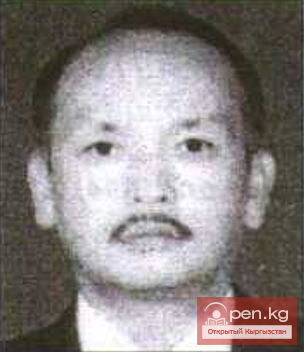
Methods of Raw Material Processing
The processing of livestock raw materials, as well as the preparation of various items from it, was carried out by both men and women, with responsibilities strictly divided between them. For example, it was always men who slaughtered the animals. They also processed the skins, from which they made harness accessories, containers for storing bowls, shoes, and straps for fastening parts of the yurt. The skins of small animals (sheep, goats) were processed by women. It was also their responsibility to make leather clothing, household bags, sacks, mats, and utensils.
The detailed description of the methods of pickling, tanning, cleaning, and kneading skins and leathers contained in the work of A. F. Burkovsky is characteristic of the southern Kyrgyz as well. Therefore, we will only touch upon this in general terms. The method of processing skins and leathers is extremely primitive. It has survived to this day, although it is no longer widespread in domestic settings, and the youth do not participate in this process.
The processing of raw materials depends on the intended use of the item. The least labor is spent on processing raw leather. Sometimes it is simply soaked in running water for several days, after which the wool is easily removed with a knife.
From such leather, strips are cut for making harnesses and for fastening parts of the yurt. Salt is also used to clean the skin of wool, which is sprinkled on it and kept rolled up for several days.
For tanning, the raw leather, cleaned of wool, is kept in a solution of sour milk ("ayran") with salt for at least 8-10 days. A flour solution (mainly from barley flour) in water or "ayran" is also used for pickling. Obtaining soft, well-tanned leather (bulgaary) requires even greater labor and time expenditures.
Sometimes the Kyrgyz would give semi-processed leather to specialists — konchu (most often Tajiks, Uzbeks, and less frequently Kyrgyz), whose work was highly valued. Therefore, well-tanned leather was only accessible to wealthy people in the past. The poor, on the other hand, used raw leather.
Sheep and goat skins are processed using salted "ayran" or a flour solution, which is thoroughly applied to the inner side of the skins for 5-6 days.
Further processing of skins and leathers involves cleaning and softening them. They are cleaned with a wooden scraper called iyrek, which has notches, or a fragment of a sickle called chalgı. Skins intended for clothing are wiped with chalk (bor), which degreases the leather and gives it whiteness.
The leather is kneaded primarily by hand; it is stretched and twisted. This is quite a lengthy process. Processing each skin requires two to three hours of intense physical work. Sometimes the skin is laid on the floor and trampled underfoot. There is a special wooden device for softening leather — talkuu. Its design is very primitive: a log 100-120 cm long with a shallow hollow carved at one end (length — 50-60 cm, width — 20-25 cm), the edges of which have notches. In the middle of the log is a hole into which a pole (til jygaç, literally — tongue of wood) with notches on the working edge is inserted. The leather is placed in the hollow and kneaded by moving the pole. Such a device is usually found with specialists engaged in making harnesses.
Processing of Skins and Leathers among Nomadic Kyrgyz











































